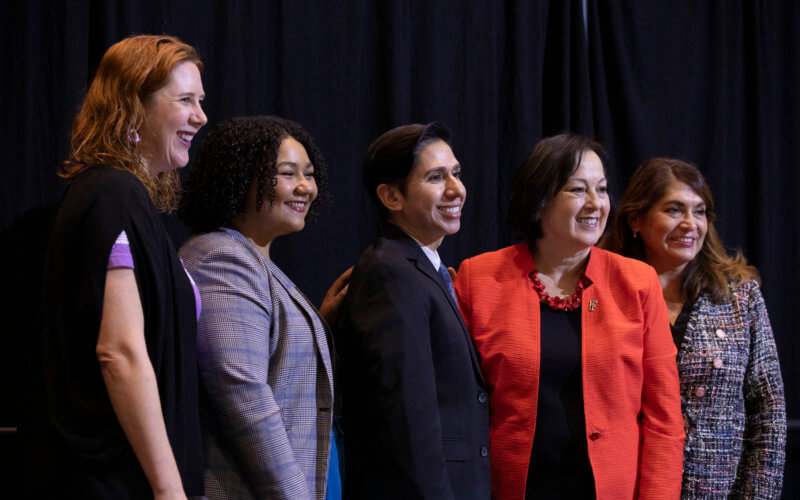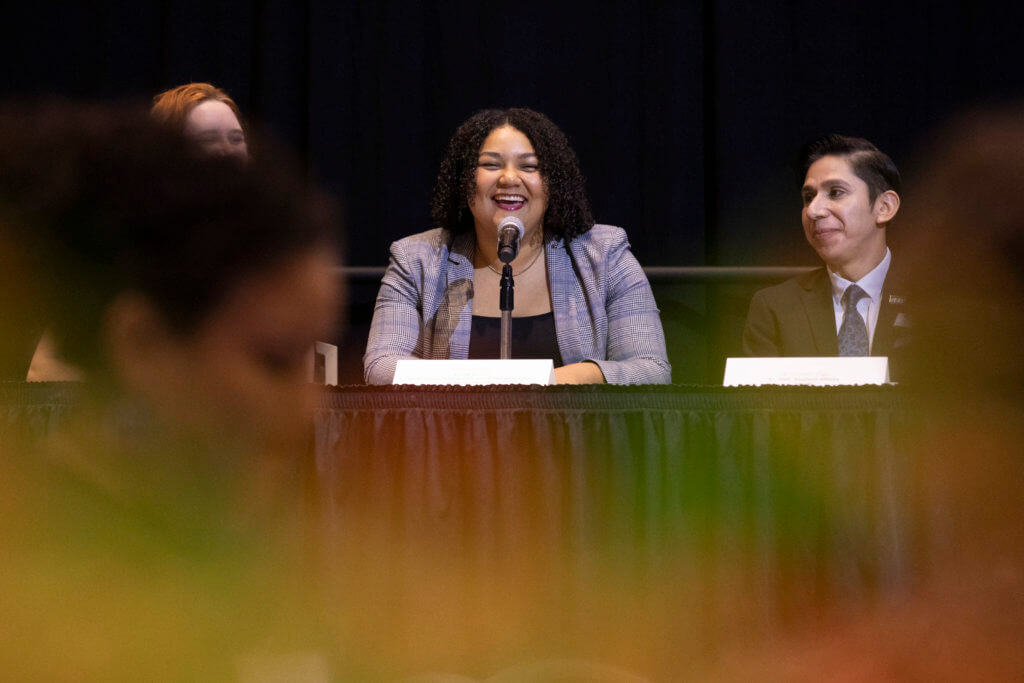
Cal State Fullerton boasts more than 41,000 students and 323,000 alumni, about 50% of whom live and work in the region upon graduation. Affordable housing — or the lack thereof — may force many to leave Orange County.
“This is an issue that challenges our students, faculty and staff,” said CSUF President Sylvia Alva at a recent meeting of Latina Leaders in Orange County. “Affordable housing helps as we reach out to hire faculty and staff as well as those we hope to retain. We also have students in dire need of having their basic needs met and that begins with housing.”
The panel discussion, moderated by Alva, focused on Orange County’s lack of affordable housing and, more importantly, what must happen to reverse the problem. Panelists included Assemblywoman Sharon Quirk-Silva (District 67); Kelsey Brewer, vice president of business development for Jamboree Housing Corp.; Becks Heyhoe, executive director of United to End Homelessness (a program of United Way); and Vincent Vigil, senior vice president for student affairs and dean of students at CSUF.
Alva noted that the university recently received $88.9 million in state funding to help provide housing to students, thanks to the work of Quirk-Silva who advocated for its passage.
“First, we need to define affordable housing,” said Brewer ’16 (B.A. political science). “It used to be that you would be advised to spend less than 30% on your mortgage or rent. However, that seems increasingly difficult even if you’re earning a decent salary.”

Who does a lack of affordable housing most affect? Some populations include senior citizens who want to “age in place” but can’t afford rising home or maintenance costs, working families (such as teachers, nurses’ aides, grocery store staff, dental hygienists, etc.), younger owners who are just starting out, and those with mental health issues.
“We also don’t build a lot of housing in Orange County,” Brewer noted. “For decades, we focused on building industries and businesses…but where are the homes to house these employees?”
“California isn’t the only state with housing issues,” said Quirk-Silva. “In the 1960s and ’70s, there were many types of new housing. You don’t see as much of that now. And there’s the NIMBY (Not in My Back Yard) factor. People don’t want to see affordable housing in their neighborhoods.”
Vigil sees the needs of students daily. “Receiving $88.9 million from the state has had a major impact. Our Basic Needs Services center, which offers food and hygiene products, has been able to expand to a larger space with three full-time workers (it started with one part-time employee). We can also provide funds for temporary housing, food and car maintenance.
“Many of our students struggle to keep costs down, but then an unexpected expense comes along — an illness, the car that provides transportation to school or work breaks down, a roommate leaves. Their tenuous situation becomes more dire,” Vigil explained. “Being able to provide grants to help them over these hurdles can mean the difference between them continuing their education or dropping out.”
“Five years ago, a point-in-time study showed Orange County spent about $300 million a year on homelessness,” said Heyhoe. “This translates to about $110,000 per homeless person. Yet with access to a roof over their heads, mental health treatment and other forms of assistance, the cost drops to about $51,000 per person.”
What Heyhoe recommends is public education and the development of “housing champions” to advocate for affordable housing.
“What we do know is that crime rates drop and property values rise when affordable housing is available,” she said.
What steps are needed to create advocacy?
“In the state, there have been hits and misses with redevelopment,” said Quirk-Silva. “There are multiple ways to help resolve these problems. On a legislative level, there are senate bills to fast-track building housing facilities on faith-based land and public school land. We’re looking at small developments, such as 10 small homes on a school property if it’s available and appropriate. It’s a start. We know that once people are housed, then we can start providing other services they may need, whether it’s health care, therapy, education or other forms of assistance.
“We’re also allowing, in some areas, the construction of ADU (access dwelling units) on private property,” she continued. “These can be used to house elderly parents or relatives, young adult children, or as an additional revenue stream for the property owner.”
United to End Homelessness offers advocacy classes that provide education to those who want to see more affordable housing options.
“Think of how housing affects other areas of people’s lives,” Brewer said. “If you care about education, people need a place to call home. If they need health care, they need a home. Housed people are less likely to catch diseases and, if they do, they are usually treated earlier. Housing makes people connected and helps the economy.
“All these issues interact with one another. We must think of education and housing. Health care and housing. Economic development and housing. Affordable housing has ripple effects on our communities.”